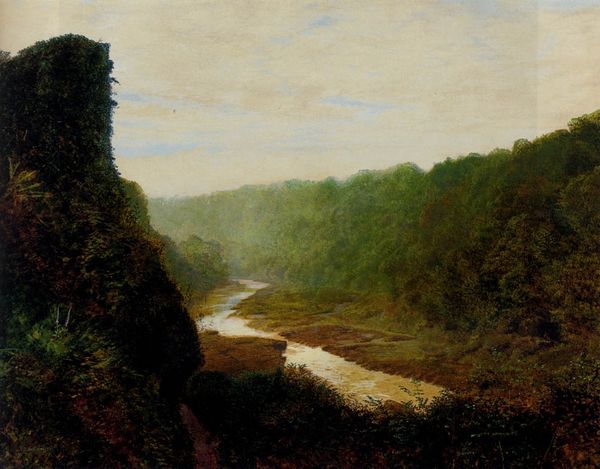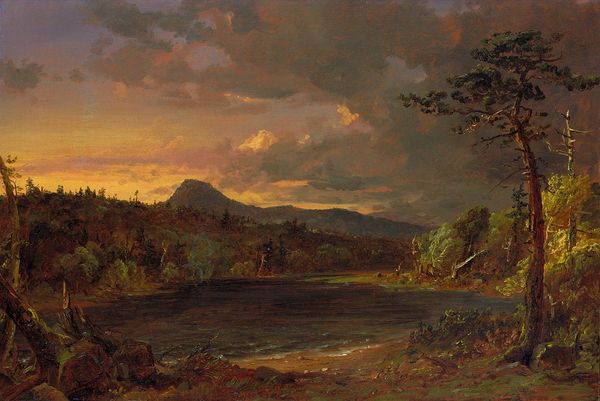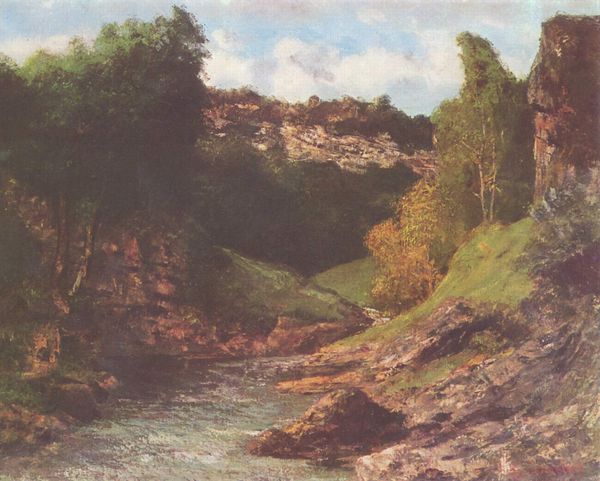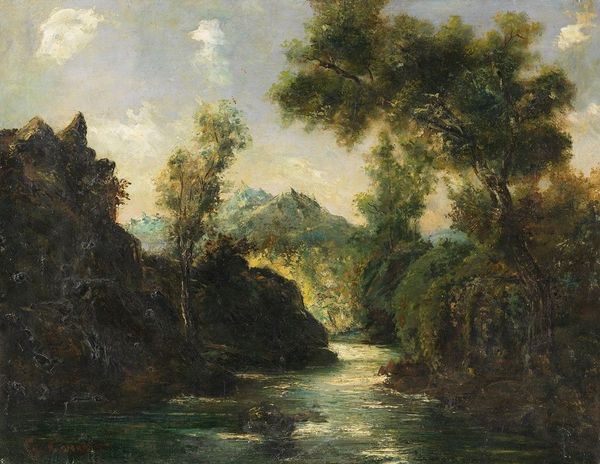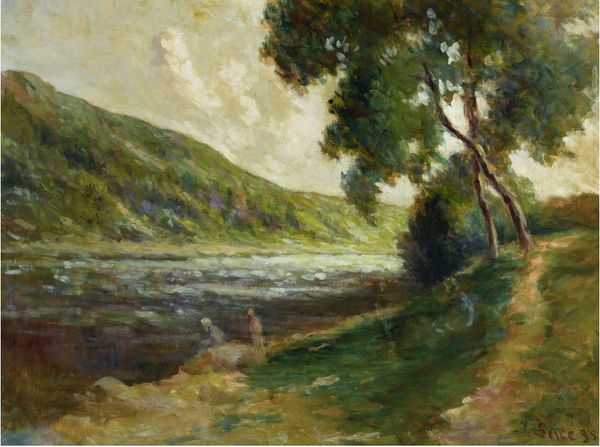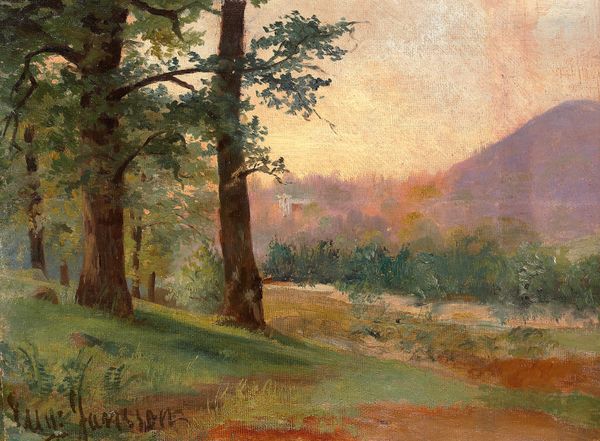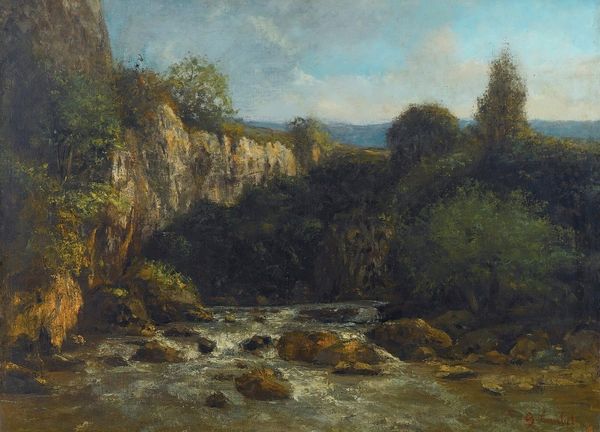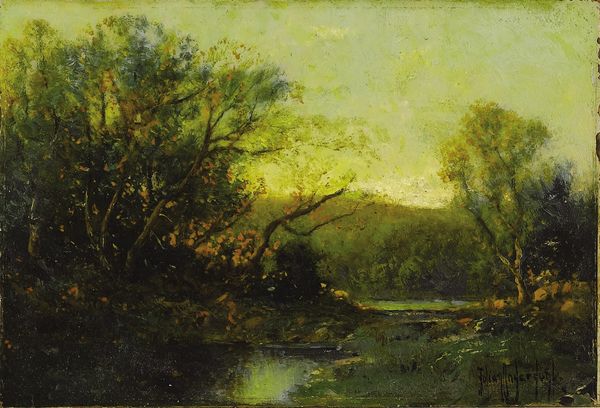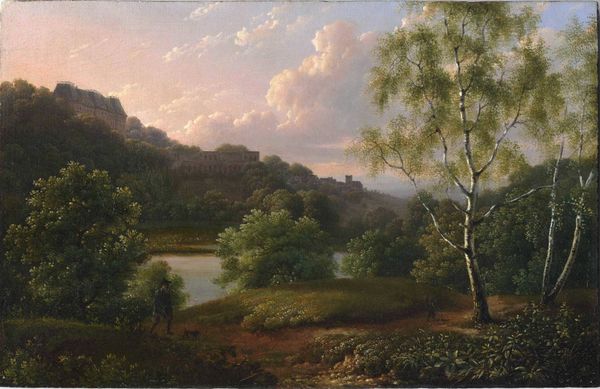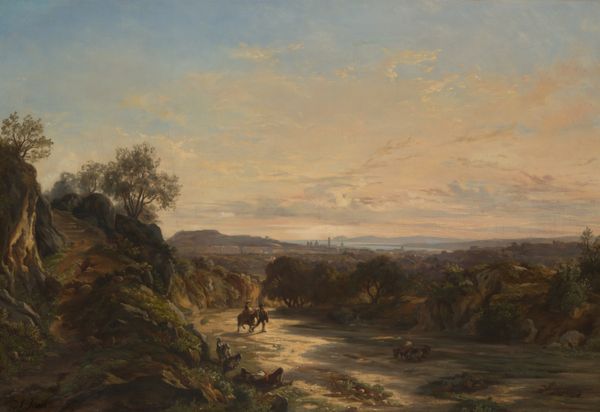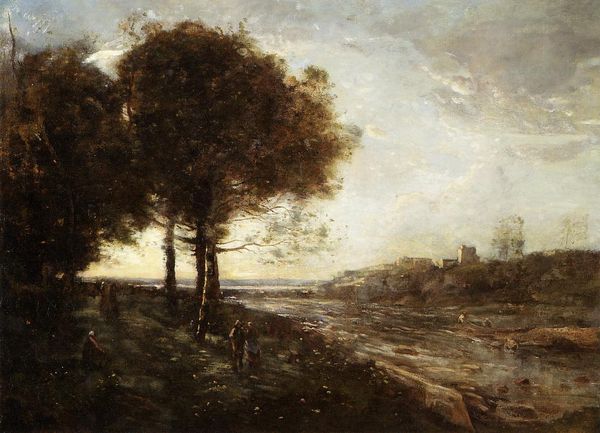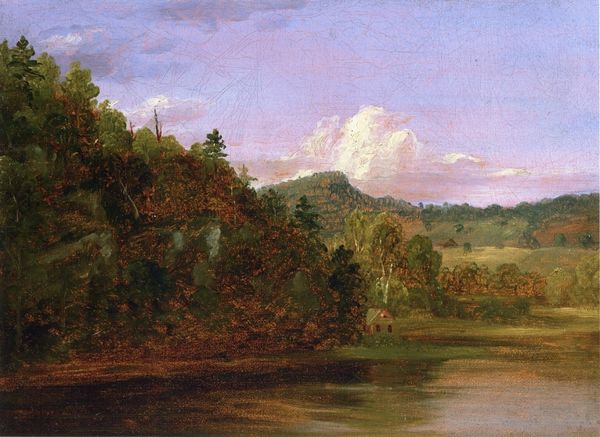
Copyright: Public Domain: Artvee
Editor: Here we have John Atkinson Grimshaw's "The Wharfe Valley, with Barden Tower beyond," dating from around the 1870s, rendered in oil paint. The overall tone is incredibly serene, and the composition leads my eye gently through the landscape. What draws your attention when you look at this piece? Curator: My focus is primarily drawn to the manipulation of light and the formal arrangement within the frame. Notice how Grimshaw orchestrates a gradual recession into space through tonal modulations. The interplay between light and shadow structures the visual field. The verticality of the trees is also noteworthy. Do you perceive how their forms act as framing devices, guiding the spectator's vision? Editor: I do now! It’s interesting how the darkness of the trees on either side pushes the eye towards the brighter valley in the center. But why the rather muted palette? It's beautiful, but not as vibrant as other landscape paintings I've seen. Curator: Precisely. It's crucial to avoid subjective value judgments like "beautiful." Instead, consider the formal choices at play. The subdued coloration contributes to the painting's unified aesthetic effect. Grimshaw is more interested in atmospheric nuance and tonal harmony. What impact does the relative lack of contrasting hues create? Editor: I see what you mean. The muted colors add to the tranquil feeling of the painting, a stillness almost. They highlight the texture in the river and the softness in the distant hills. Curator: Indeed. Through rigorous formal analysis, we have illuminated elements of this painting. Focus on how individual artistic choices contribute to a unified visual experience, and personal reaction becomes more insightfully informed. Editor: This was helpful, viewing the structure this way. Thank you.
Comments
No comments
Be the first to comment and join the conversation on the ultimate creative platform.
